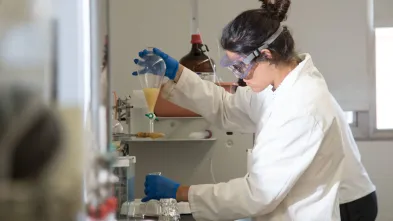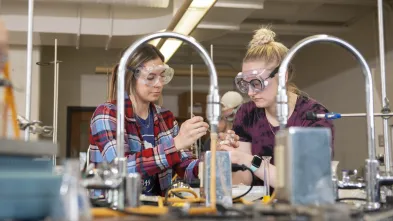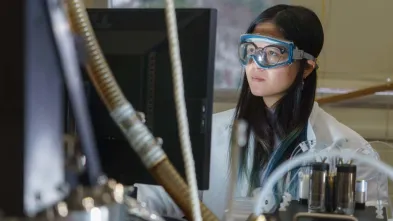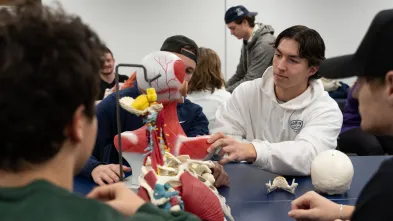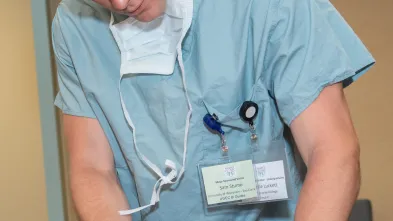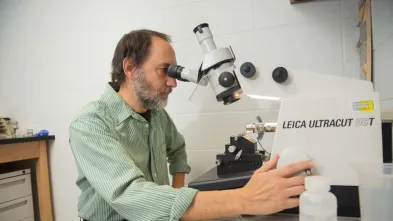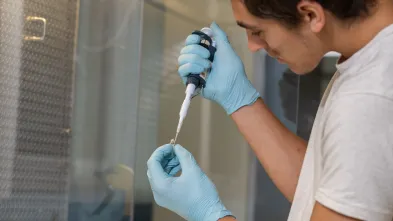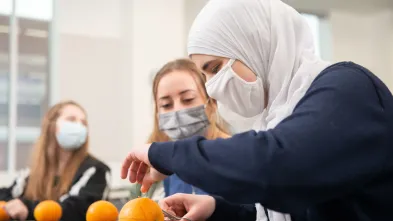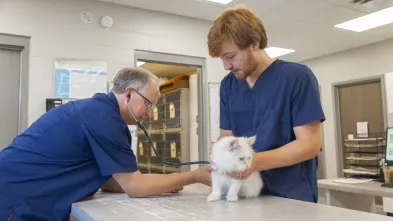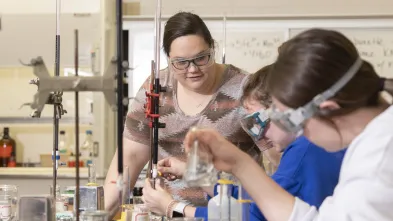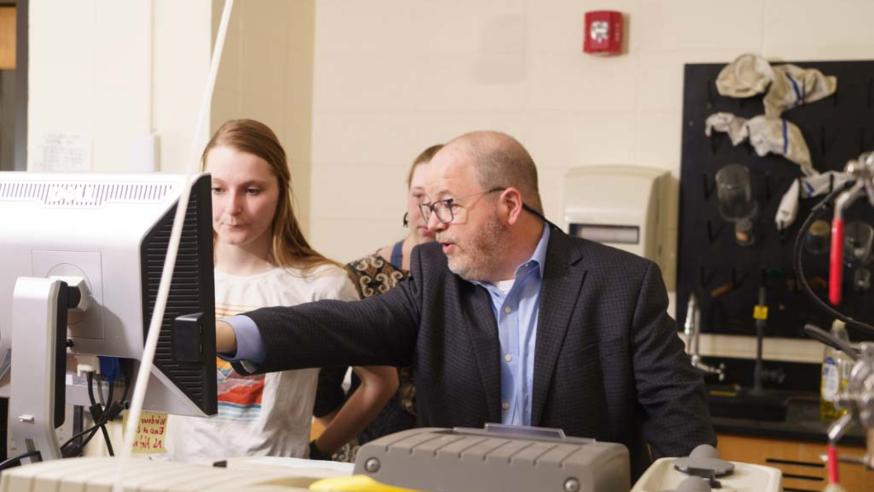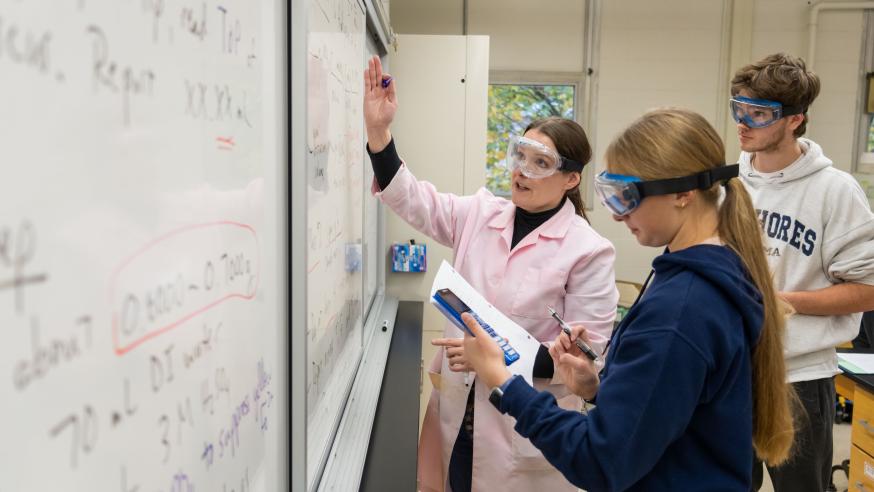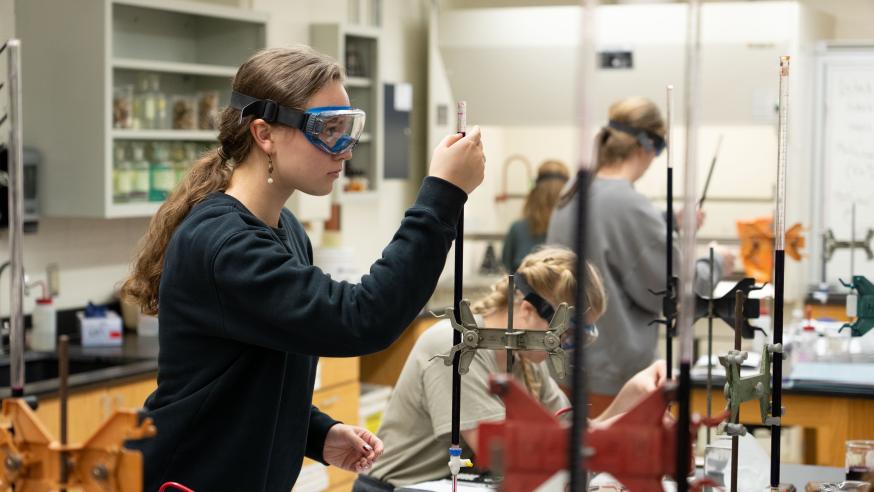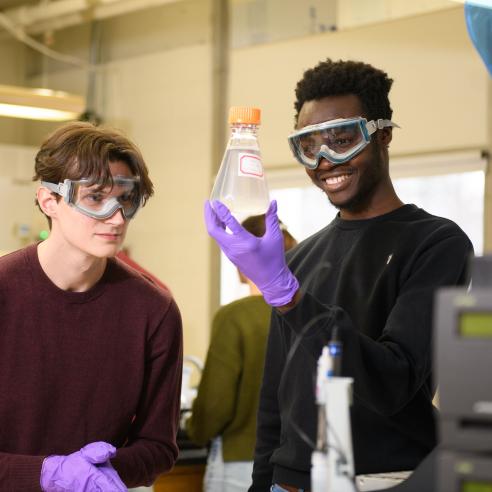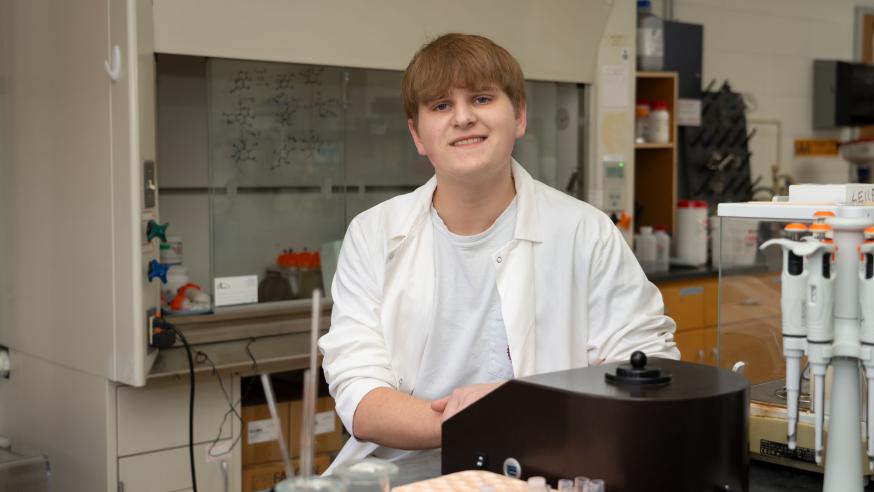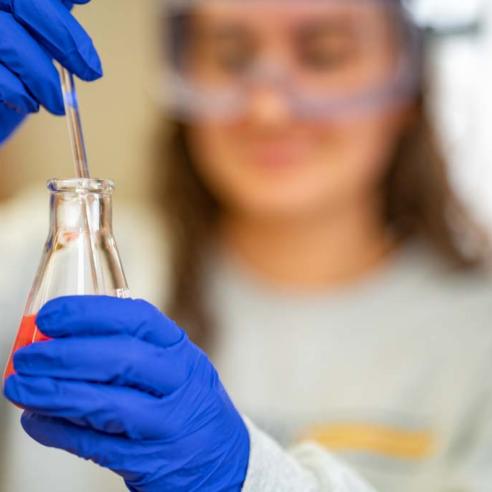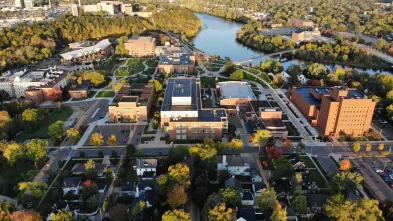Chemistry and Biochemistry Department
A Catalyst for Your Future
UW-Eau Claire's Chemistry and Biochemistry Department offers opportunities many other institutions don't — a world-class education with multiple degree options, numerous faculty-student research opportunities, and courses and labs taught exclusively by exceptional faculty and staff.
Majors and Minors in Chemistry and Biochemistry
With a chemistry or biochemistry degree from UW-Eau Claire you’ll receive not only technical training but also the fundamental skills that are the hallmark of a Blugold liberal arts education — communication, critical thinking, and people skills. This winning combination renders students quite well prepared for graduate and professional programs, or enables them to land that first job and advance in it.
With a wide range of majors to choose from, we can serve your interests and prepare you with the knowledge and practical experiences to launch a career in any area of chemistry. Our graduates find opportunities immediately after graduation, whether they seek employment directly, or choose to pursue advanced studies in graduate or professional school. Our programs are broadly applicable to a wide range of industries, and provide a skill set that is relevant, marketable, and adaptable. Not only do our graduates find employment, they also retain a great deal of mobility that allows movement between industries throughout their careers.
Meet the Faculty

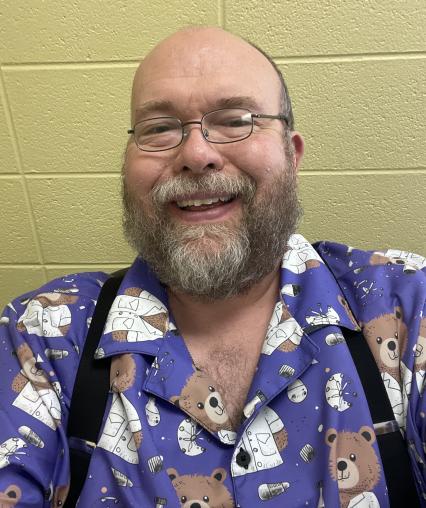
Justthe
facts
Blugold Stories
Chemistry and Biochemistry Department
Phillips Science Hall 430
101 Roosevelt Avenue
Eau Claire, WI 54701
United States

